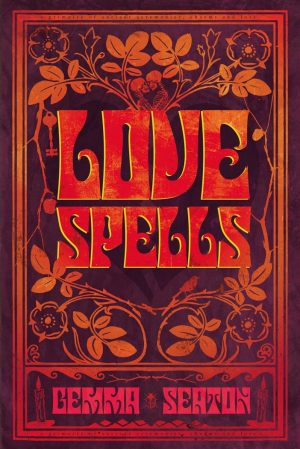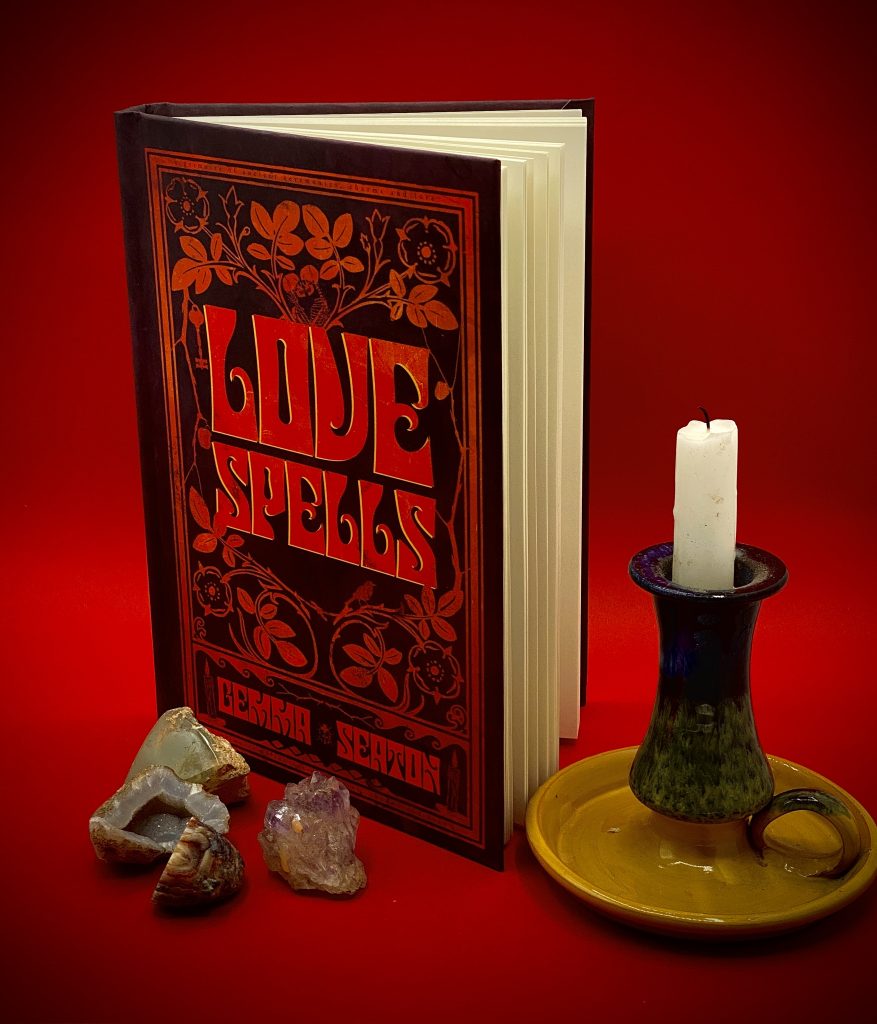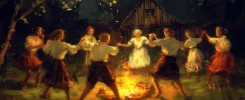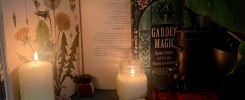Learn the art of love magic with these six traditional spells perfect for Valentine’s Day.
As a magical little treat this Valentine’s Day, we’re sharing our favourite seasonal charms from our very own Love Spells grimoire. Of course, we don’t believe that anyone needs romantic love to enjoy February 14th (or any day of the year), but it’s always fun to look back at the traditional customs and divination rituals that have been passed down generation after generation.
**Please note that most of the following charms were originally published at the start of the twentieth century and earlier, and so the language they use are centred around binary constructs of gender and heteronormativity. No matter how you identify or who you are attracted to, you can adapt these spells and make them your own.
Wishing you all a truly wonderful Valentine’s Day.
Love Spells celebrates the ancient art of love magic in a collection of authentic traditions used throughout the ages to invoke love, practice divination, and heal broken hearts.
Valentine's Day Love Spells
St. Valentine’s Day—14th February
On the eve of St. Valentine’s Day the young folks in England and Scotland, by a very ancient custom, celebrate a little festival. An equal number of maids and bachelors get together; each writes his or her true or some feigned name upon separate billets, which they roll up, and draw by way of lots, the maids taking the men’s billets, and the men the maids’; so that each of the young men lights upon a girl that he calls his valentine, and each of the girls upon a young man whom she calls hers. By this means each has two valentines; but the man sticks faster to the valentine that is fallen to him than to the valentine to whom he is fallen. Fortune having thus divided the company into so many couples, the valentines give balls and treats to their mistresses, wear their billets several days upon their bosoms or sleeves, and this little sport often ends in love.
The common people seem to have imagined that an influence was inherent in the day, which rendered in some degree binding the lot or chance by which any youth or maid was now led to fix attention on a person of the opposite sex. It was supposed, for instance, that the first unmarried person of the other sex whom one met on St. Valentine’s morning in walking abroad, was a destined wife or husband.
(Chambers, 1875)
A Scottish Valentine’s Day Charm
St. Valentine’s Eve has an observance of its own in the South of Scotland. The young people assemble and write the names of their acquaintances on slips of paper, placing those of the lads and lasses in separate bags apart. The maidens draw from the former, the young men from the latter, three times in succession, returning the names after the first and second times of drawing. If one person takes out the same name three times consecutively, it is without fail that of the future husband or wife.
Thus, in Burns’s song of Tam Glen the maiden sings:
Yestreen at the Valentine dealing,
My heart to my mon gi’ed a sten,
For thrice I drew ane without failing,
An’ thrice it was written, Tam Glen.
(Henderson, 1879)
A Divination Ceremony
Some days are considered specially propitious for practising love divinations. Foremost among these is St. Valentine’s Day, as there is an old tradition that on this day birds choose their mates, a notion which is frequently alluded to by the poets, and particularly by Chaucer, to which reference is made also in A Midsummer Night’s Dream:
“Good morrow, friends, St. Valentine is past;
Begin the wood-birds but to couple now.”
Thus, the Devonshire young ladies have a fancy that on St. Valentine’s Day they can, if they wish, make certain of their future. If so disposed, they go into the churchyard at midnight, with some hemp-seed in their hand, which, after they have walked round the church a certain number of times, they scatter on either side as they return homewards, repeating a certain charm. It is supposed that the true lover will be seen taking up the hemp-seed just sown, attired for the ceremony in a winding-sheet. Another species of love-divination once observed consisted in obtaining five bay leaves, four of which the anxious maiden pinned at the four comers of her pillow, and the fifth in the middle. If she was fortunate enough to dream of her lover, it was a sure sign that he would be married to her in the course of the year. Again, some young people would boil an egg hard, and, after taking out the contents, fill the shell with salt, the charm consisting in eating the shell and salt on going to bed at night without either speaking or drinking after it. A further method of divination was practised in the following way:
The lady wrote her lovers’ names upon small pieces of paper, and, rolling them up in clay, put them into a tub of water. The first that rose to the surface was to be not only her Valentine, but, in all probability, her future husband.
(Thiselton-Dyer, 1881)
Love Tokens
If you receive one of those love tokens, and cannot guess the party who sent it, or are in any doubt, the following method will explain it to a certainty: Prick the fourth finger of your left hand, and with a crow quill write on the back of the valentine the day and hour in which you were born, and the date of the year; also of the present one, the moon’s age, and the name of the present morning star, all of which you will find in the almanac, and the sign into which the sun has entered. Try this on the first Friday after you receive the valentine, but do not go to bed till midnight; place the paper in your left shoe, and put it under your pillow, and lie on your left side.
The young woman will be sure to dream of the identical person who sent the valentine and be enabled to guess if he is to be her husband.
(Noe, 1885)
Dream Divination
We all know St. Valentine’s Day, February 14th, is the great day for lovers. Here is a dream charm to be worked only on that night.
On going to bed a girl must repeat out aloud:
St. Valentine, pray condescend
To be this night a maiden’s friend.
Let me now my lover see,
Be he high or low degree;
By a sign his station show,
Be it weal or be it woe,
Let him come to my bedside
And my fortune thus decide.
If the marriage is to take place soon, the girl will see her future husband plainly in her dream. On the other hand, if there is to be delay or if she has not met him as yet, she will have some sign to tell her what his position in life will be. For instance, if he is a sailor she will see a ship; if a countryman, she may see a field of corn or grazing cattle, etc..
(Hawthorne, 1936)
An Account of Valentine’s Day Divination
Last Friday was Valentine Day, and the night before I got five bay-leaves, and pinned four of them to the four corners of my pillow, and the fifth to the middle; and then, if I dreamt of my sweet-heart, Betty said we should be married before the year was out. But to make it more sure, I boiled an egg hard, and took out the yolk, and filled it with salt; and when I went to bed, eat it, shell and all, without speaking or drinking after it. We also wrote our lovers’ names upon bits of paper, and rolled them up in clay, and put them into water: and the first that rose up was to be our Valentine. Would you think it, Mr Blossom was my man. I lay a-bed and shut my eyes all the morning, till he came to our house; for I would not have seen another man before him for all the world.
(Brand and Ellis, 1877)
A Grimoire of Ancient Charms, Lore, and Ceremonies
Breathing new life into magical traditions and bringing hidden knowledge to light, Love Spells is a testament to the rich history of love magic.





